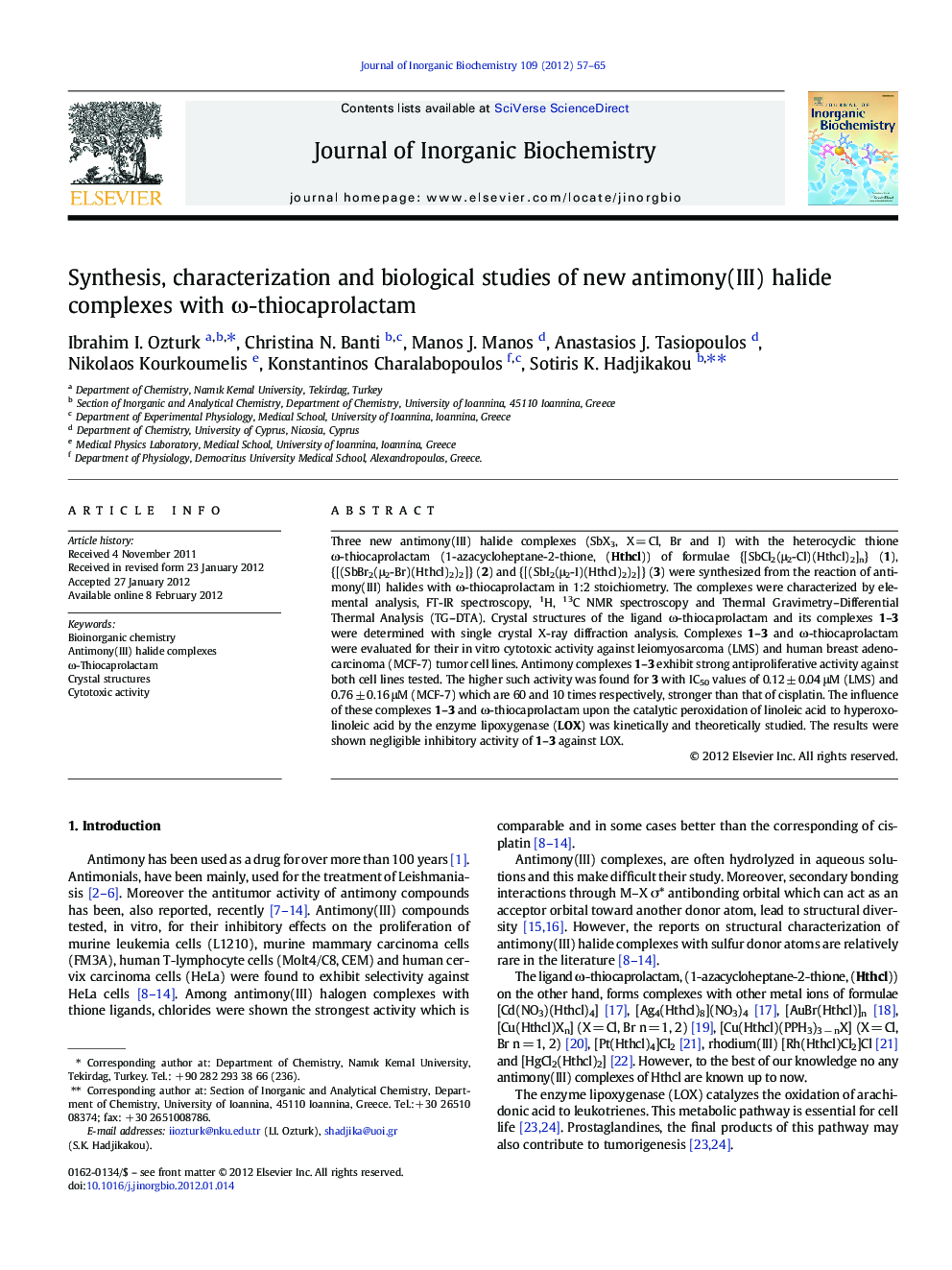| Article ID | Journal | Published Year | Pages | File Type |
|---|---|---|---|---|
| 1317780 | Journal of Inorganic Biochemistry | 2012 | 9 Pages |
Three new antimony(III) halide complexes (SbX3, X = Cl, Br and I) with the heterocyclic thione ω-thiocaprolactam (1-azacycloheptane-2-thione, (Hthcl)) of formulae {[SbCl2(μ2-Cl)(Hthcl)2]n} (1), {[(SbBr2(μ2-Br)(Hthcl)2)2]} (2) and {[(SbI2(μ2-I)(Hthcl)2)2]} (3) were synthesized from the reaction of antimony(III) halides with ω-thiocaprolactam in 1:2 stoichiometry. The complexes were characterized by elemental analysis, FT-IR spectroscopy, 1H, 13C NMR spectroscopy and Thermal Gravimetry–Differential Thermal Analysis (TG–DTA). Crystal structures of the ligand ω-thiocaprolactam and its complexes 1–3 were determined with single crystal X-ray diffraction analysis. Complexes 1–3 and ω-thiocaprolactam were evaluated for their in vitro cytotoxic activity against leiomyosarcoma (LMS) and human breast adenocarcinoma (MCF-7) tumor cell lines. Antimony complexes 1–3 exhibit strong antiproliferative activity against both cell lines tested. The higher such activity was found for 3 with IC50 values of 0.12 ± 0.04 μM (LMS) and 0.76 ± 0.16 μM (MCF-7) which are 60 and 10 times respectively, stronger than that of cisplatin. The influence of these complexes 1–3 and ω-thiocaprolactam upon the catalytic peroxidation of linoleic acid to hyperoxolinoleic acid by the enzyme lipoxygenase (LOX) was kinetically and theoretically studied. The results were shown negligible inhibitory activity of 1–3 against LOX.
Graphical abstractNew antimony(III) halide complexes with ω-thiocaprolactam (Hthcl) of formulae {[SbCl2(μ2-Cl)(Hthcl)2]n} (1), {[(SbBr2(μ2-Br)(Hthcl)2)2]} (2) and {[(SbI2(μ2-I)(Hthcl)2)2]} (3) were synthesized and characterized by X-ray analysis. The cytotoxicity of the ligand and its complexes 1-3 against LMS and MCF-7 cancer cells has been also evaluated. This activity is significant higher than that of cisplatin.Figure optionsDownload full-size imageDownload as PowerPoint slideHighlights► Synthesis of new antimony(III) complexes with ù-thiocaprolactam. ► Structural characterization. ► In vitro cytotoxic activity against LMS and MCF-7 tumor cell lines.
